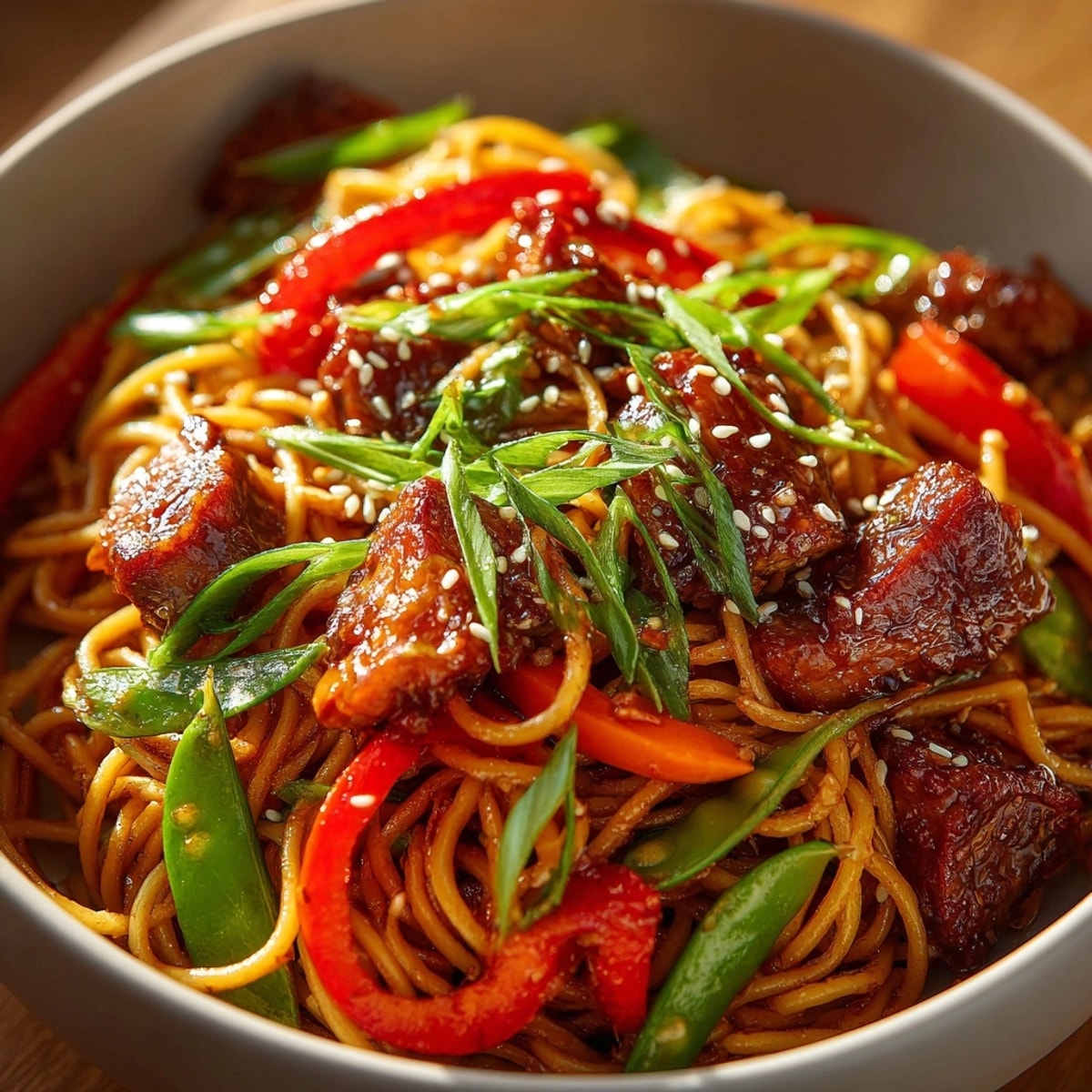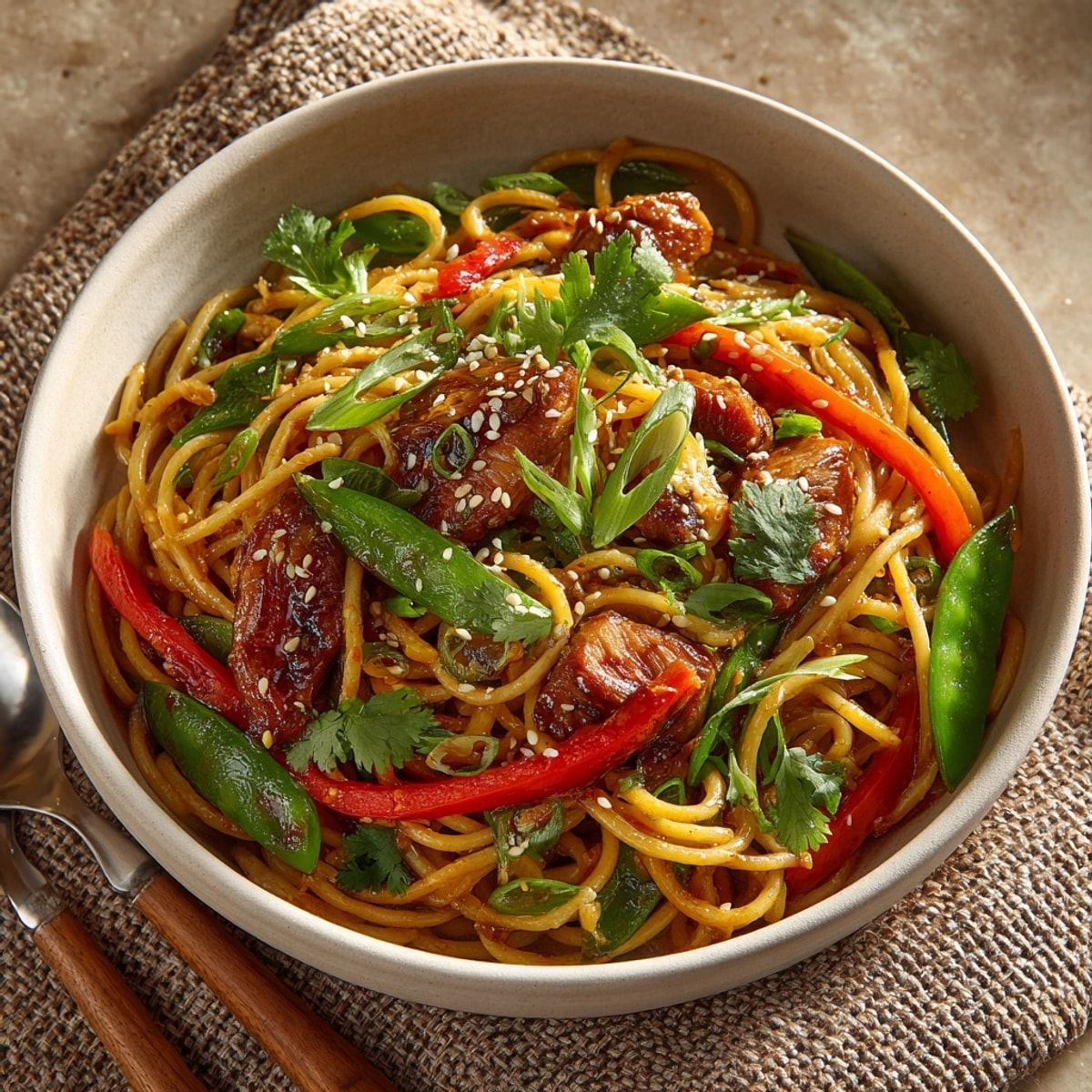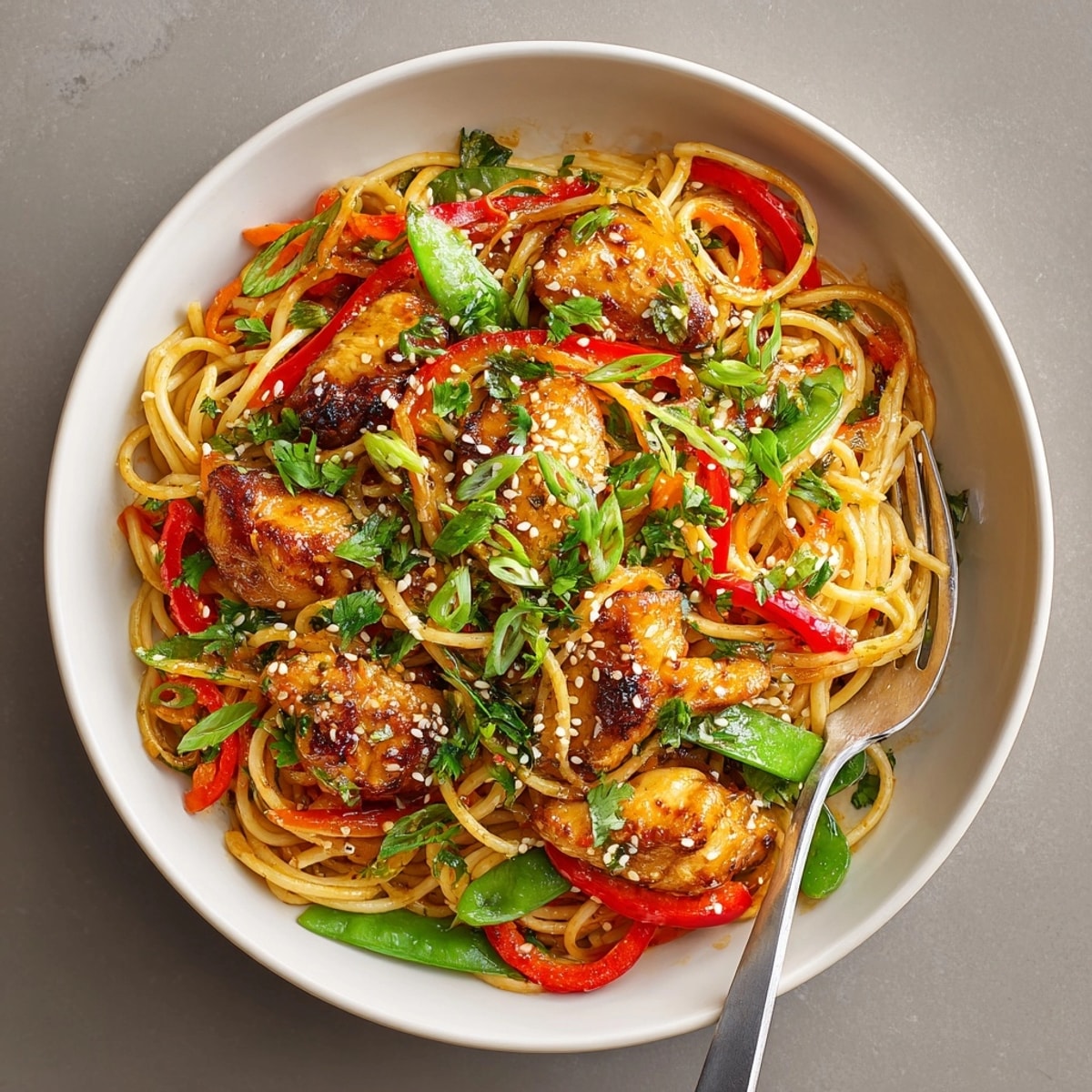 Save
Save This miso maple chicken pasta bowl combines the deep umami of miso with the natural sweetness of maple syrup to create a balanced sauce that coats tender chicken and pasta. The addition of crisp vegetables brings color and texture to this comforting weeknight meal that's both sophisticated and simple.
I created this recipe when trying to use up some miso paste in my refrigerator and was amazed at how well it paired with maple syrup. My family now requests these bowls at least once a month and even my picky eater cleans the plate every time.
Ingredients
- Chicken: 500g boneless skinless chicken thighs or breasts cut into bite sized pieces. Thighs provide more flavor and stay juicier than breast meat
- Miso Paste: 2 tablespoons white miso paste which adds umami depth without being too assertive. Look for refrigerated miso paste at Asian markets or health food stores
- Maple Syrup: 2 tablespoons pure maple syrup not pancake syrup for its clean natural sweetness
- Soy Sauce: 2 tablespoons soy sauce for saltiness and depth. Choose low sodium if watching salt intake
- Rice Vinegar: 1 tablespoon rice vinegar for brightness and acidity
- Neutral Oil: 1 tablespoon neutral oil like canola or sunflower to help the marinade adhere
- Garlic: 2 cloves garlic minced for aromatic foundation
- Ginger: 1 teaspoon fresh ginger grated for warmth and complexity
- Noodles: 300g dried spaghetti linguine or soba noodles as the hearty base
- Bell Pepper: 1 red bell pepper thinly sliced for sweetness and color
- Snap Peas: 1 cup snap peas halved for crunch and freshness
- Carrot: 1 medium carrot julienned for subtle sweetness and texture
- Green Onions: 2 green onions sliced for mild onion flavor and garnish
- Sesame Seeds: 1 tablespoon sesame seeds optional but adds wonderful nuttiness
- Cilantro: 1 tablespoon chopped fresh cilantro optional for herbal brightness
Instructions
- Create the Marinade:
- Combine miso paste maple syrup soy sauce rice vinegar oil garlic and ginger in a medium bowl and whisk until completely smooth. The miso paste takes some effort to fully incorporate so be patient and ensure no lumps remain. This balanced marinade is the flavor foundation of the entire dish.
- Marinate the Chicken:
- Add your chicken pieces to the marinade and toss thoroughly to ensure each piece is well coated. Allow the chicken to marinate for at least 15 minutes at room temperature or up to an hour in the refrigerator. The longer marination time allows the flavors to penetrate the meat more deeply.
- Cook the Pasta:
- Bring a large pot of water to a rolling boil and add a generous amount of salt until it tastes like seawater. Add your chosen pasta and cook according to package directions until al dente. Before draining reserve 1/4 cup of the starchy pasta water which will help create a silky sauce later. Drain the pasta but do not rinse to preserve the starch that helps sauce adhesion.
- Cook the Chicken:
- Heat a large skillet or wok over medium high heat until hot. Add the marinated chicken along with all marinade rather than discarding it. Cook for 6 to 8 minutes stirring occasionally to prevent burning. The chicken is done when it reaches 165°F internal temperature and the marinade has reduced to a glossy glaze that coats the meat.
- Add the Vegetables:
- Add the bell pepper snap peas and carrot directly to the skillet with the chicken. Sauté for just 2 to 3 minutes until the vegetables are tender crisp. Overcooking will cause them to lose their vibrant color and pleasant texture so watch carefully.
- Combine and Finish:
- Add the cooked pasta directly to the skillet with the chicken and vegetables. Using tongs toss everything together thoroughly ensuring the pasta gets coated with the sauce. If the mixture seems dry gradually add the reserved pasta water a tablespoon at a time until you achieve a silky coating on the noodles. The starch in the water helps emulsify the sauce.
 Save
Save The star ingredient here is definitely the white miso paste which adds incredible depth to the sauce without overpowering the dish. I first discovered miso when traveling through Japan and have been incorporating it into non traditional dishes ever since. The slight fermented flavor adds complexity that salt alone could never achieve.
Make Ahead Options
This recipe works beautifully for meal prep. Cook everything as directed but slightly undercook both the pasta and vegetables. Store in airtight containers in the refrigerator for up to 3 days. When reheating add a splash of water or chicken broth to loosen the sauce as the pasta will absorb liquid as it sits. Microwave for 1 to 2 minutes stirring halfway through or reheat in a skillet over medium heat until warmed through.
Ingredient Substitutions
For those avoiding gluten use 100 percent buckwheat soba noodles or your favorite gluten free pasta and substitute tamari for the soy sauce.
Vegetarians can replace the chicken with 400g extra firm tofu pressed and cubed or 2 cups of cooked edamame for a protein rich alternative.
No maple syrup? Honey works well though it has a different flavor profile. Brown sugar dissolved in a tablespoon of hot water can also substitute in a pinch.
If white miso is unavailable yellow miso can work though it has a stronger flavor so use slightly less. Red miso is more intense and will significantly change the dish's profile.
Serving Suggestions
Serve these bowls with a simple side of miso soup for a complete Japanese inspired meal. A small cucumber salad dressed with rice vinegar sesame oil and a pinch of salt adds refreshing contrast.
For a more substantial meal add a soft boiled egg on top of each bowl. The creamy yolk creates another dimension of sauce when mixed in.
A sprinkle of furikake Japanese seasoning blend or toasted nori strips adds umami and visual appeal as a finishing touch.
Cultural Context
This recipe represents a modern fusion approach blending traditional Japanese ingredients like miso with Western elements like pasta. Miso has been a staple in Japanese cuisine for centuries valued for its preservative qualities and nutritional benefits. The maple syrup adds a North American touch creating a cross cultural dish that honors both traditions while creating something new.
Seasonal Adaptations
Spring version features asparagus peas and radishes instead of bell pepper
Summer bowl incorporates zucchini corn and cherry tomatoes for seasonal freshness
Fall adaptation uses butternut squash shiitake mushrooms and kale for heartier flavor
 Save
Save Enjoy this delicious and balanced Miso Maple Chicken Pasta Bowl for a satisfying and flavorful meal.
Recipe Questions
- → Can I substitute the chicken with another protein?
Yes, firm tofu works well as a vegetarian option and soaks up the miso-maple marinade beautifully.
- → Are soba noodles required or can I use other pasta?
Any long pasta such as spaghetti or linguine will work; soba adds a nutty flavor and can be gluten-free.
- → Is this dish dairy-free?
Yes, it is naturally dairy-free as prepared. Always check labels for hidden dairy in store-bought ingredients.
- → How do I adjust the spice level?
Add a drizzle of chili oil or a sprinkle of chili flakes for more heat according to your taste.
- → Can I make this gluten-free?
Use gluten-free pasta and substitute soy sauce with tamari, ensuring all ingredients are certified gluten-free.
- → What vegetables can I swap in?
Broccoli florets, snow peas, or thinly sliced zucchini all make great colorful additions or substitutions.